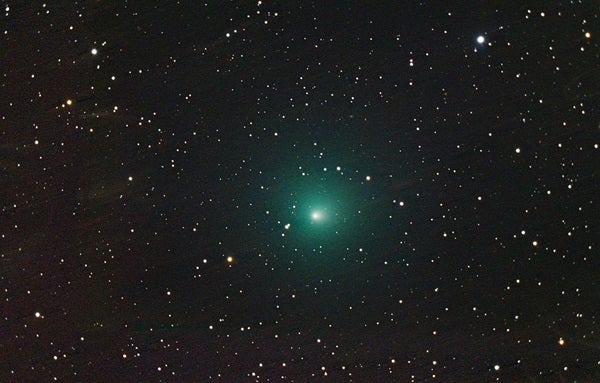The comet, which was originally discovered way back in 1889, currently glows between 9th and 10th magnitude and shows up nicely through 4-inch and larger telescopes.
Comet 64P/Swift-Gehrels should be particularly easy to find this evening because it appears less than 1° north of the 2nd-magnitude star Mirach (Beta [β] Andromedae). This region passes nearly overhead for observers at mid-northern latitudes between 9 and 10 p.m. local time.
While you’re exploring this area, also look for the 10th-magnitude elliptical galaxy NGC 404, which lies a mere 7′ northwest of Mirach. Swift-Gehrels should appear more conspicuous than the galaxy.
As a side not, the Moon reached apogee, the farthest point in its orbit around Earth, at 10:56 a.m. EST today. At the time, it sat 251,245 miles (404,339 kilometers) from Earth’s center.
For more quick observing tips, make sure to check out The sky this week for November 9 through 18.










